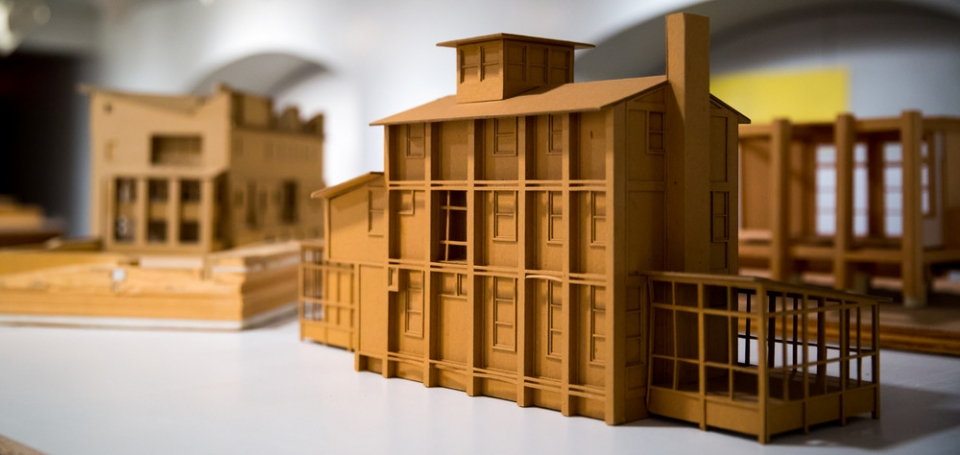University of Pennsylvania
Earlier this summer, five architects and civil engineers traveled nearly 8,000 miles from Dhaka, Bangladesh, to visit Penn’s Architectural Archives. For weeks, they sought to uncover the intricacies of Louis I. Kahn’s early drawings of their beloved National Assembly Building.
“For us, the National Assembly Building has become the most important administrative hub, but after 40 years, the building has started to degrade, and there’s many things we need to do to keep the puzzle pieces together,” says Saiqua Bente Alam, an architect for the Government of Bangladesh. “The rule for basic conservation or restoration is that you need to know what it was originally.”
On any given day, the Archives are bustling with patrons just like Alam, who are studying the developing works of the world’s greatest designers and builders for renovation purposes. Located in the lower level of the Fisher Fine Arts Building, the Archives preserve the drawings, models, documents, and even doodles in diaries associated with the creative processes of more than 400 architects from the 17th century to the present.
Founded in 1978 out of the University’s School of Design, the Archives garnered international acclaim after adding Kahn’s vast collection. Kahn was a talented architect, creating well-regarded work internationally, such as the design of the National Assembly Building, the Salk Institute in California, and Penn’s own Richards Medical Research Laboratories. Kahn was also a Penn alumnus who taught at the design school until his death in 1974.
....
Whitaker says scholars from at least 35 different countries have visited the Archives and used its resources. In one year, Whitaker says he will lead tours of the space for 1,500 people, and more than 3,000 patrons will view the always-changing exhibitions. New this August through October is an exhibit exploring the use of drawings and prototypes from Philadelphia firm KieranTimberlake.
“We strive to really dynamically engage with the resources we have,” Whitaker says. “The idea of the Archives being a place where things come to gather dust, we’re anything but that.”
